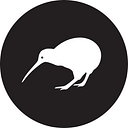NZDF helps seize over 1.75 tonnes of narcotics in Indian Ocean
The New Zealand Defence Force (NZDF) has helped an international naval coalition seize more than 1.75 tonnes of narcotics from traffickers in the Indian Ocean in the past two months.
The Combined Maritime Forces (CMF) said surveillance information from maritime patrol aircraft provided by New Zealand, Denmark and France led to eight drug busts between April and June.
Three of these drug busts were based on tip-offs from a Royal New Zealand Air Force P-3K2 Orion aircraft and led to the seizure of 650 kg of heroin worth an estimated $400 million.
“We’ve got a great team of people who worked so hard to deliver these results,” Wing Commander DJ Hunt, who led the NZDF’s maritime surveillance operations in the Middle East until mid-June, said.
“Through the CMF, the NZDF has been contributing to the multi-national effort against drug trafficking, which causes social harm to our communities and is a known funding stream of terrorist organisations,” Wing Commander Hunt said.
Two Royal New Zealand Navy sailors are posted as boat coxswains on board the Royal Australian Navy frigate HMAS Arunta, which is currently deployed to support the CMF’s counter-terrorism and maritime security operations in the Middle East region. Working on a tip-off from the RNZAF Orion, the Arunta intercepted a vessel with a cache of 250 kg of heroin on 10 May.
Although it is warships from CMF participating nations that intercept and board the drug trafficking vessels, surveillance information from maritime patrol aircraft plays a crucial role.
The CMF said it would take a maritime patrol aircraft only 27 days to comb the CMF Combined Task Force 150’s area of operation, which spans 5.2 million square kilometres in the Indian Ocean. In contrast, it would take a frigate 400 days to cover the same area.
“Finding a trafficker that is moving and has an active interest in avoiding a warship is like looking for a needle in a haystack,” the CMF said in a statement.
But “with intelligence-led planning, maritime patrol aircraft can search specific areas and feed this information to the warships (that) can pursue and intercept the dhows (vessels).”
The NZDF sent an Orion and a 55-member detachment to the Middle East in February to work as part of the CMF over the next 12 months.
The CMF is a 31-nation naval partnership that promotes maritime security and seeks to defeat terrorism and prevent piracy and the trafficking of people and drugs across about 8.2 million square kilometres of international waters.
CTF 150, which is one of three task forces that comprise the CMF, is focussed on maritime security and counter-terrorism. Over one-third of the world’s oil passes each year through CTF 150’s area of operation, which covers the Red Sea, Gulf of Aden, Indian Ocean and the Gulf of Oman. The area also includes the main shipping routes from the Far East to Europe and the US.
